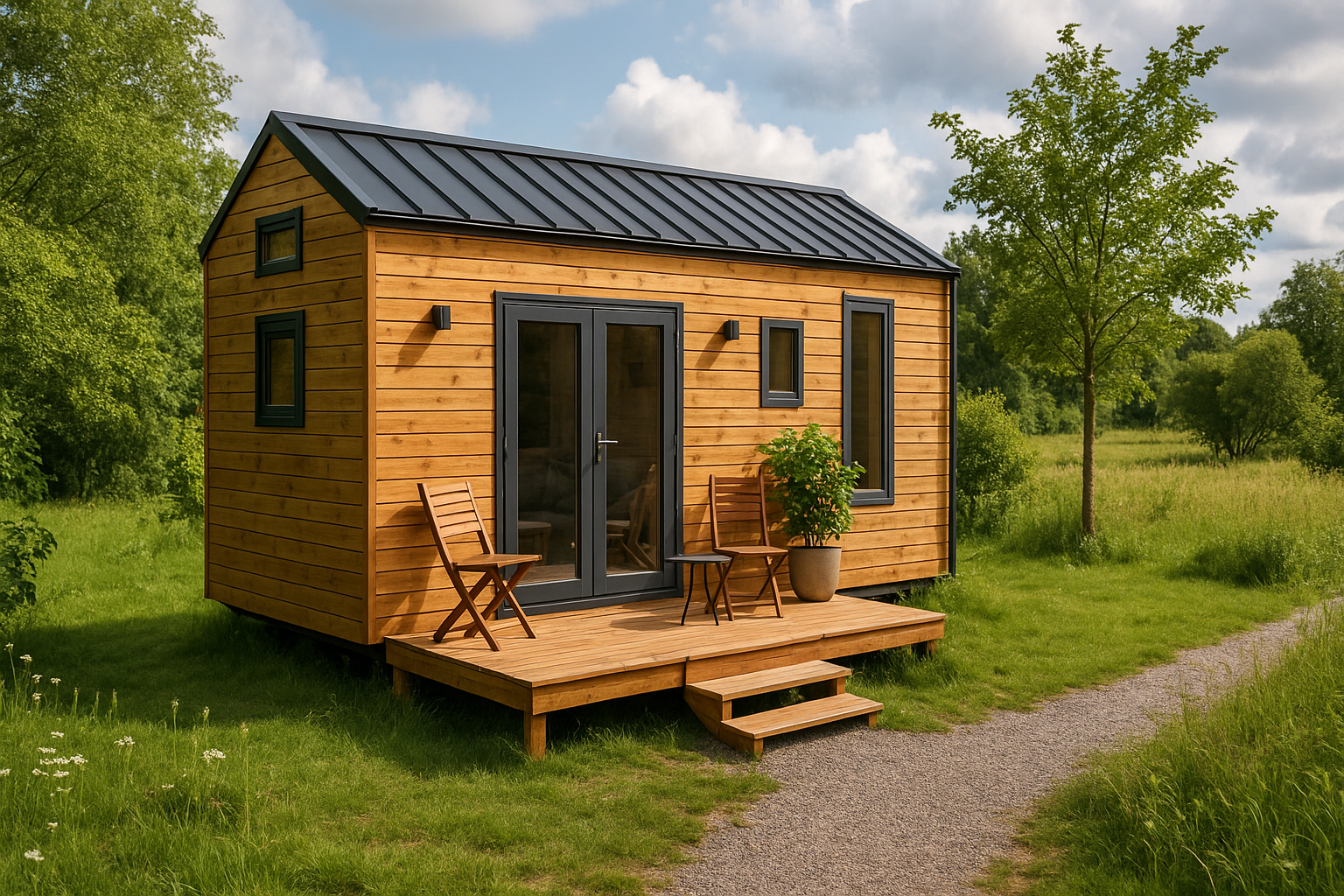
Estimated reading time: 10 minutes
Key Takeaways
- Tiny home living offers a fresh, affordable, and sustainable alternative to traditional housing.
- Micro homes and tiny houses combine innovative design with eco-friendly practices to maximize small spaces.
- Legal considerations such as zoning rules and building codes are essential to ensure a successful project.
- Communities and minimalist living provide supportive networks for those embracing a lifestyle of freedom.
Table of contents
- Understanding Tiny Home Living and Micro Homes
- Benefits of Micro Homes and Tiny House Living
- Micro Home Design and Space Optimization
- Legal Considerations and Tips for Tiny Home Living
- Lifestyle and Communities Around Tiny Home Living
- Conclusion: The Case for Tiny Home Living
- Frequently Asked Questions
Tiny home living is reshaping our ideas of what it means to have a home. As the alternative housing movement grows, more people turn to tiny home living as a way to embrace simple, cost-effective, and sustainable lifestyles. Whether exploring micro home design, tiny house living, or simply wanting to downsize, this guide provides insights ranging from affordability and green living to smart legal tips and community inspiration.
Understanding Tiny Home Living and Micro Homes
Key Terms: Tiny Homes and Micro Homes
- Tiny homes: Residential structures typically under 500 square feet, designed for space efficiency and sustainability. Explore concepts of micro home design and small space living as detailed in the Tiny Homes Market Report.
- Micro homes: Even more compact dwellings that are cleverly designed for utility and style. For urban design inspirations, check out compact living guide.
Who is Choosing Tiny Home Living?
- Young professionals are attracted to the mobility and affordability of tiny houses.
- Retirees are embracing urban downsizing and the minimalist lifestyle, with studies indicating “40% of people aged 55+ are considering smaller homes” as reported in the Tiny Homes Market Report.
- Eco-conscious individuals value the lower environmental impact and efficiency that comes with tiny home living.
Cultural and Social Shifts in Tiny House Living
- Urban downsizing offers modern solutions for city dwellers facing high living costs.
- A shift towards a minimalist lifestyle emphasizes experiences and essentials over possessions, as discussed in tiny home living benefits.
- Off-grid homes are becoming popular among those who seek energy independence and eco-friendly alternatives.
Benefits of Micro Homes and Tiny House Living
Affordability and Financial Freedom
- Low build cost: Micro homes and tiny houses can be built from $10,000 to $100,000, offering a stark contrast to traditional housing prices.
- Budget-friendly lifestyle: Reduced utility bills and maintenance costs help free up resources for travel or other life goals.
- Key benefits: Affordable micro housing provides a path to financial freedom, as highlighted by resources like the Tiny House Statistics 2024 and the Tiny Homes Market Report.
Sustainability and Green Living
- Lower environmental impact: The smaller footprint of tiny homes leads to a significant reduction in carbon emissions.
- Green features: Solar panels, composting toilets, and energy-efficient designs are just a few elements that contribute to sustainable living.
- This approach focuses on green living and efficient home design for a reduced monthly cost and preserved environment.
Efficient Home Design: Maximizing Every Inch
- Space optimization: Unique design solutions ensure that every inch of space in a tiny home serves a purpose.
- Creative solutions: From fold-down beds to built-in storage, tiny houses cleverly integrate multi-functionality.
- For more insights, explore resources like the Tiny House Statistics 2024 and the Tiny Homes Market Report.
Micro Home Design and Space Optimization
Tiny House Ideas: Smart Micro Home Design
- Multi-functional furniture such as Murphy beds and convertible sofas offer flexible living solutions.
- Vertical storage solutions using shelves and cabinets help maximize small space living. For more ideas, visit this guide.
- Open floor plans create a welcoming atmosphere, reducing the feeling of confinement in compact spaces.
Eco-Friendly Design Principles for Micro Homes
- Light and solar access: Large windows enhance natural lighting and reduce energy needs.
- Advanced insulation and effective airtight building methods contribute to energy savings and comfort.
- Renewable systems: Incorporating solar panels and rainwater collection systems helps achieve true sustainable living, as seen in the Tiny Homes Market Report.
Urban Micro Homes: City Living in Small Spaces
- Fitting into cities: Urban micro homes maximize limited space, perfectly aligning with modern city life.
- Modern aesthetics: Innovative architectural design brings together compact functionality with urban flair.
Legal Considerations and Tips for Tiny Home Living
Legal Tiny Home Tips: Zoning, Building Codes & Permits
- Know the rules: Always check local zoning regulations, minimum size requirements, and permit needs before starting your project.
- Tiny house laws: Some areas have strict codes that may limit where tiny homes can be sited, especially for off-grid or mobile designs.
- Seek local advice: Consulting local experts can save time and money by preventing costly mistakes during the building process.
Navigating Zoning and Building Codes for Micro Homes
- Urban downsizing often requires creative adaptation to local codes in densely populated areas.
- Off-grid challenges: Special considerations for utility hookups and inspections are common for off-grid homes.
- Community support: Many regions now offer tiny house villages and more lenient zoning rules for alternative housing.
Recommendations for Success and Compliance
- Plan ahead: Early dialogues with local officials can pave the way for a smoother process.
- Network: Engage in local and online groups dedicated to tiny house living for insider tips and resources like remote work solutions.
- Stay compliant: Following legal guidelines and expert advice is crucial for a successful tiny home project.
Lifestyle and Communities Around Tiny Home Living
Minimalist Lifestyle and Downsizing Tips
- Start with less: A minimalist mindset clears the path to embrace a streamlined lifestyle, as discussed in tiny home living benefits.
- Decluttering: Regularly sort possessions into keep, donate, or discard categories to preserve space and clarity.
- Multi-use spaces: Combining areas, such as living spaces doubling as workspaces, reinforces practical tiny living guidelines.
Building Community: The Tiny House Movement and Inspiration
- Success stories: Many tiny home enthusiasts share experiences of financial freedom and a closer connection to nature.
- Urban downsizing: In metropolitan areas, compact living fosters strong, supportive communities, a trend explored in urban compact living.
- Shared resources: Community gardens, tool libraries, and cooperative ventures are common within these vibrant neighborhoods.
Social Benefits and Connections in Tiny Home Villages
- Resource sharing: Cooperative networks help residents save money and enjoy a higher quality of life.
- Mutual support: Close-knit communities bring together shared experiences and collective problem-solving.
- Innovative living solutions: Experimentation with sustainable and efficient home designs is common within these groups.
Conclusion: The Case for Tiny Home Living
Tiny home living is more than just a trend—it’s a transformative lifestyle that blends affordability, environmental stewardship, and simplicity. Through innovative design, cost-effective solutions, and legal clarity, tiny homes and micro homes offer a balanced alternative to traditional housing.
We’ve covered:
- The key elements of tiny home living, including efficient micro home design.
- The financial, environmental, and social benefits of downsizing.
- Essential legal guidelines and expert tips for building your dream tiny home.
- The supportive communities that enrich the experience of living small.
Ready to embark on your tiny home journey? Dive deeper, connect with experts, and explore the resources available to transform your vision into a vibrant reality.
For further insights, visit Tiny House Statistics 2024 and Tiny Homes Market Report. Additional inspiration is available at tiny home living benefits, and explore urban design tips at compact urban living.
Frequently Asked Questions
Who can benefit most from tiny home living?
Whether you’re a young professional seeking flexibility, a retiree looking to downsize, or an eco-conscious individual aiming for a smaller carbon footprint, tiny home living offers tailored benefits for every lifestyle.
What legal aspects should I consider before building a tiny home?
It is critical to research local zoning laws, building codes, and permitting procedures. Consulting with local authorities and experts ensures your tiny home project complies with all regulations.
How do micro homes maximize space efficiency?
Micro homes employ creative design strategies such as multi-functional furniture, vertical storage, and open floor plans, ensuring every inch is used efficiently without sacrificing comfort.

Leave a Reply